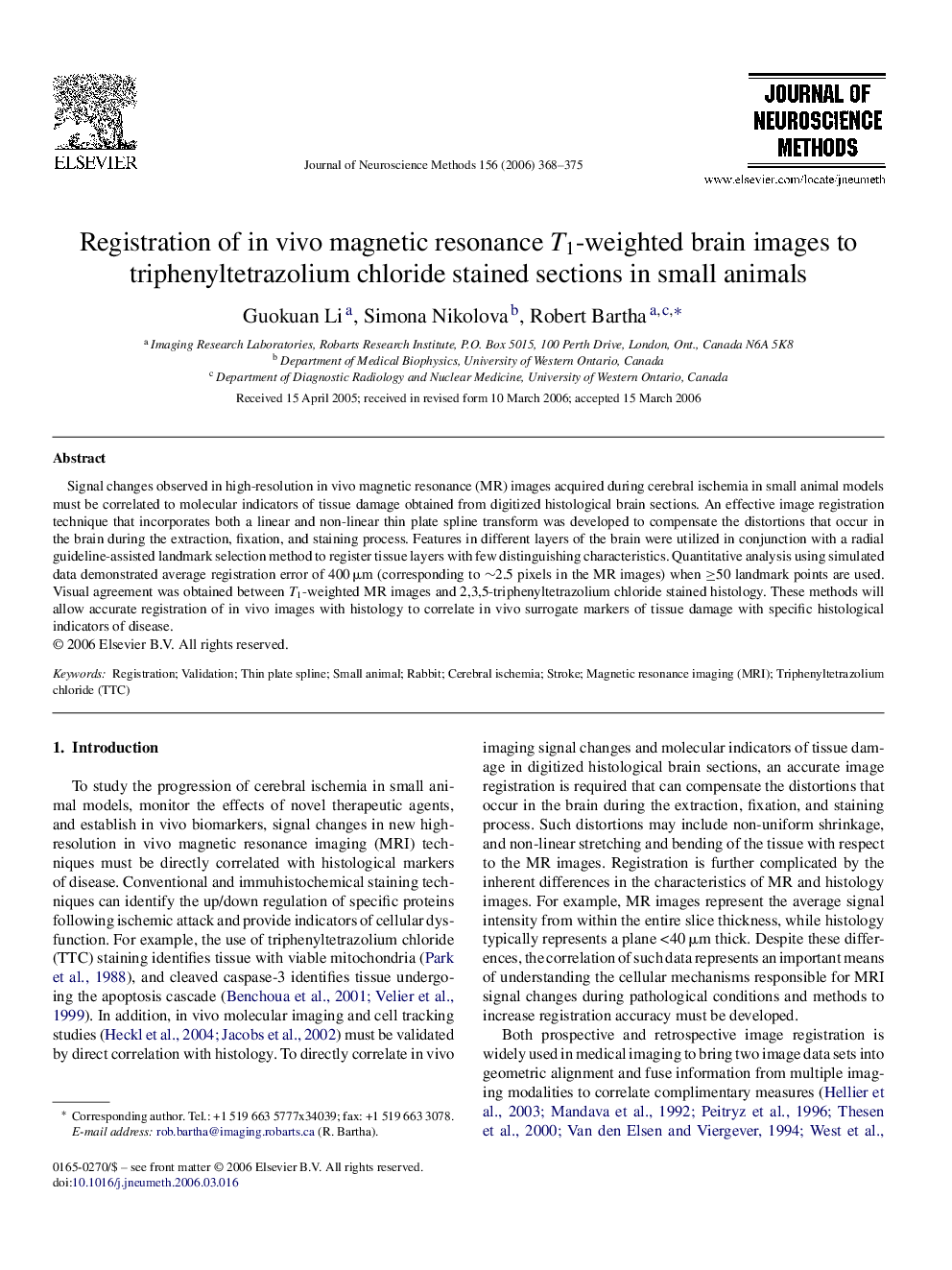| Article ID | Journal | Published Year | Pages | File Type |
|---|---|---|---|---|
| 4337138 | Journal of Neuroscience Methods | 2006 | 8 Pages |
Signal changes observed in high-resolution in vivo magnetic resonance (MR) images acquired during cerebral ischemia in small animal models must be correlated to molecular indicators of tissue damage obtained from digitized histological brain sections. An effective image registration technique that incorporates both a linear and non-linear thin plate spline transform was developed to compensate the distortions that occur in the brain during the extraction, fixation, and staining process. Features in different layers of the brain were utilized in conjunction with a radial guideline-assisted landmark selection method to register tissue layers with few distinguishing characteristics. Quantitative analysis using simulated data demonstrated average registration error of 400 μm (corresponding to ∼2.5 pixels in the MR images) when ≥50 landmark points are used. Visual agreement was obtained between T1-weighted MR images and 2,3,5-triphenyltetrazolium chloride stained histology. These methods will allow accurate registration of in vivo images with histology to correlate in vivo surrogate markers of tissue damage with specific histological indicators of disease.
